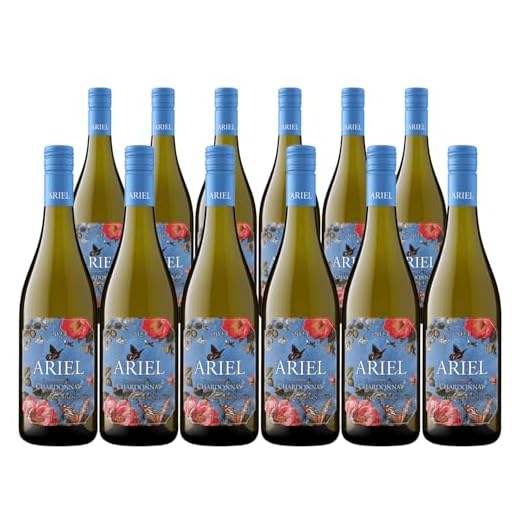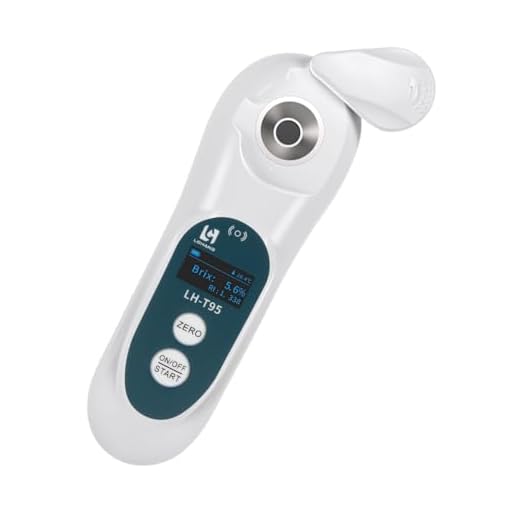



In a standard serving of Chardonnay, you can expect around 1 to 2 teaspoons of carbohydrates derived from residual fermentable elements. This amount may vary based on the specific type and production method of the beverage.
When selecting a bottle, consider that drier varietals typically contain lower levels of these components compared to sweeter options. If you’re conscious of your intake, opt for those with lower residuals, as they often provide a more refreshing experience.
For those pairing with food, a balanced approach can enhance your dining experience. Try complementing seafood or light salads with this varietal, maintaining harmony between the elements on your plate and in your glass.
Understanding Residual Sweetness in a Serving of Chardonnay
A typical pour of Chardonnay contains around 0.5 to 1.5 grams of residual sweetness per 5-ounce serving. This amount can vary significantly based on the winemaking process and the specific style of the wine. Dry varieties tend to be on the lower end of this scale, while more fruit-forward options may approach the higher end.
Factors Influencing Sweetness Levels
The fermentation process plays a crucial role in determining the final sweetness of the beverage. Winemakers can choose to halt fermentation early, leaving some natural grape sugars unconverted into alcohol. Additionally, factors such as grape variety, climate, and growing conditions contribute to the final profile of the pour.
Pairing Recommendations
When pairing Chardonnay with food, consider its sweetness level. Dishes like roasted chicken or creamy pasta can complement the drink beautifully. If you’re curious about preparing chicken dishes, check out this link for information on how long it takes to cook ground chicken.
Always remember to taste and explore different options; the world of wine offers a vast array of experiences waiting to be discovered.
Understanding Sugar Content in Different Types of White Wine
For those interested in the sweetness levels of various white varieties, it’s essential to recognize that the residual sweetness can significantly vary. Dry options like Sauvignon Blanc typically contain less than 1% of residual sweetness, translating to a very minimal amount of natural sugars. On the other hand, a Riesling can surprise with its higher sweetness, often reaching up to 7% or more, depending on the style and region of production.
Factors Influencing Sweetness Levels
The ripeness of grapes at harvest plays a pivotal role in the final product’s sweetness. Grapes harvested later in the season possess higher sugar content due to prolonged exposure to sunlight, resulting in sweeter wines. Additionally, winemaking techniques, such as the addition of unfermented grape juice or late harvesting methods, can further elevate sweetness levels.
Understanding Labels and Terminology
Familiarizing yourself with labels is key to navigating the sweetness spectrum. Terms like “dry,” “off-dry,” or “sweet” provide valuable insights into what to expect. Some producers may classify their offerings as “semi-sweet,” which often indicates a pleasant balance between acidity and sweetness. Exploring these distinctions can enhance your appreciation and selection process when choosing a bottle.
Factors Affecting Sugar Levels in White Wine
Fermentation duration significantly influences the residual sweetness. Extended fermentation typically reduces sweetness, while shorter processes leave more unfermented sugars, resulting in a sweeter profile.
The grape variety plays a crucial role. Varieties such as Riesling and Moscato are known for their higher natural sweetness, while Sauvignon Blanc and Chardonnay often yield drier profiles.
Climate conditions during the growing season affect sugar accumulation in grapes. Warmer climates generally produce riper grapes, leading to increased sugar content, whereas cooler regions may yield less sweet fruit.
Winemaking techniques also contribute. Methods like stopping fermentation early or adding unfermented grape juice can enhance sweetness levels. Additionally, the use of noble rot (Botrytis cinerea) in certain styles can significantly elevate sugar concentration.
Storage and aging processes impact flavor and perceived sweetness. Wines aged in oak barrels may develop richer flavors that can mask sweetness, while stainless steel aging tends to preserve the fruit’s natural characteristics.
Understanding these factors is essential for selecting a preferred style that aligns with personal taste preferences. Each element, from grape variety to winemaking practices, shapes the final experience in the glass.
Typical Sugar Content in Popular White Wine Varieties
Chardonnay typically contains about 1 to 3 grams of residual sweetness per serving. This variety often showcases a range of flavors, and its sugar content can shift based on the region and winemaking techniques.
Riesling is known for its higher levels, generally ranging from 5 to 30 grams per serving, especially when sourced from regions like Germany, where the varietal is frequently crafted in a sweeter style.
Sauvignon Blanc usually has lower sweetness levels, averaging around 1 to 4 grams, making it a crisp option with zesty acidity. Its flavor profile is often complemented by herbal and citrus notes.
Pinot Grigio, on the other hand, tends to be on the drier side, with approximately 1 to 3 grams of sweetness, appealing to those who prefer a lighter, refreshing experience.
Gewürztraminer is often sweet, ranging from 5 to 25 grams, celebrated for its aromatic character and spiciness, ideal for pairing with flavorful cuisines.
Understanding these variations helps in selecting the perfect pour for your palate and meal pairing, enhancing your enjoyment of each unique varietal.
Measuring Sweetness in White Wine Accurately
To determine the sweetness level in a variety of light-bodied beverages, utilize a refractometer or hydrometer. These tools offer precise measurements of residual content, allowing you to gauge the sweetness effectively. A refractometer uses light refraction to assess the liquid’s density, while a hydrometer floats in the liquid, providing a reading based on its buoyancy.
For accurate results, ensure the beverage is at the recommended temperature, typically around 20°C (68°F). Calibration of the instrument before usage is essential to eliminate any discrepancies. Follow the manufacturer’s instructions for best practices.
Record multiple samples to establish consistency, and analyze each batch separately, particularly when dealing with different varieties. This practice helps highlight variations that may occur due to grape type or production methods.
| Method | Tool | Temperature | Calibration |
|---|---|---|---|
| Refractometer | Refractometer | 20°C (68°F) | Before use |
| Hydrometer | Hydrometer | 20°C (68°F) | Before use |
Once you have gathered your data, consult reference charts to interpret the results. This approach will help you understand the specific sweetness level and how it aligns with your expectations for different varieties. Through careful measurement and analysis, you can enhance your appreciation and knowledge of these delightful drinks.
Impact of Sugar on Flavor Profile of White Wine
The presence of residual sweetness significantly shapes the tasting experience of a white varietal. Elevated levels of this component can create a soft, lush mouthfeel, enhancing the fruitiness and making it more approachable for many palates. For instance, a Riesling with a higher residual level often showcases vibrant notes of peach and apricot, while balancing acidity helps maintain freshness.
Conversely, drier styles, such as Sauvignon Blanc, typically possess a crisper profile, allowing for green apple and citrus notes to shine through. The interplay between acidity and this element is crucial; a well-structured wine harmonizes these aspects, leading to a balanced and enjoyable sip.
Understanding the impact of sweetness on overall perception is fundamental. A higher concentration can mask bitterness and enhance the perception of body. This characteristic is particularly evident in dessert wines, where the richness often complements dessert flavors, creating an exquisite pairing.
Consider the region and grape variety; both play vital roles in determining sweetness levels. For example, wines from warmer climates may exhibit more pronounced fruit characters and sweetness compared to those from cooler areas, which tend to emphasize acidity and mineral qualities. Each varietal tells a story through its sugar content, shaping its unique flavor journey.
When tasting, pay attention to how sweetness interacts with food. Pairing a semi-sweet Chenin Blanc with spicy Asian cuisine can lead to a delightful contrast, balancing heat with sweetness. This element is not merely an additive; it’s a key player in achieving flavor harmony.
Comparing Sugar Content in White Wine vs. Other Alcoholic Beverages
In terms of sweetness, the difference in carbohydrate levels between various alcoholic drinks can be quite pronounced. Understanding these variations helps in making informed choices during tastings or pairings.
Alcoholic Beverages Overview
- Beer: Many beers, especially lagers and ales, contain around 1-3 grams of carbohydrates per serving. Craft beers may have higher levels due to added ingredients.
- Spirits: Most distilled liquors like vodka, gin, and whiskey have negligible carbohydrate content, typically less than 1 gram per serving unless flavored or mixed with sugary mixers.
- Cocktails: The sweetness of cocktails varies significantly based on ingredients. For instance, a margarita or cosmopolitan can contain upwards of 10-20 grams of carbohydrates due to added syrups and juices.
Comparison with White Varieties
While some varietals of lighter beverages may have lower carbohydrate content, it’s essential to consider the context of consumption and flavor profile. Different styles of white varietals, like Riesling or Moscato, can range from dry to sweet, impacting their carbohydrate levels. A dry varietal may have minimal carbohydrates, while a sweeter one can reach higher levels similar to some cocktails.
When selecting a beverage, consider not only the sweetness but also the overall balance of flavors. This knowledge can enhance your experience, whether enjoying a casual dinner or hosting a sophisticated gathering.
Health Considerations Related to Sweetness in White Wine
Opt for moderation. While a sip of chilled beverage can bring enjoyment, excessive intake can lead to health issues, particularly related to caloric intake and potential weight gain.
Caloric Impact
The energy provided by the sweetness in this beverage can add up quickly. If you enjoy a couple of servings, consider how it fits into your overall daily caloric goals. A typical serving may contribute a noticeable portion to your intake, especially when combined with other foods.
Blood Sugar Effects
Monitoring your body’s response is wise. The natural sweetness can lead to spikes in blood glucose levels, which is a concern for those managing diabetes or insulin sensitivity. Pairing with food can help mitigate these effects, so consider enjoying it alongside a meal.
- Choose lower sweetness options if you’re watching sugar intake.
- Consider enjoying the beverage with proteins or fats to help balance the glycemic load.
- Stay aware of how different varieties affect your body; some might be sweeter than others.
Ultimately, savor the experience while being mindful of your health. Enjoying this delightful beverage can be part of a balanced lifestyle when consumed thoughtfully.










